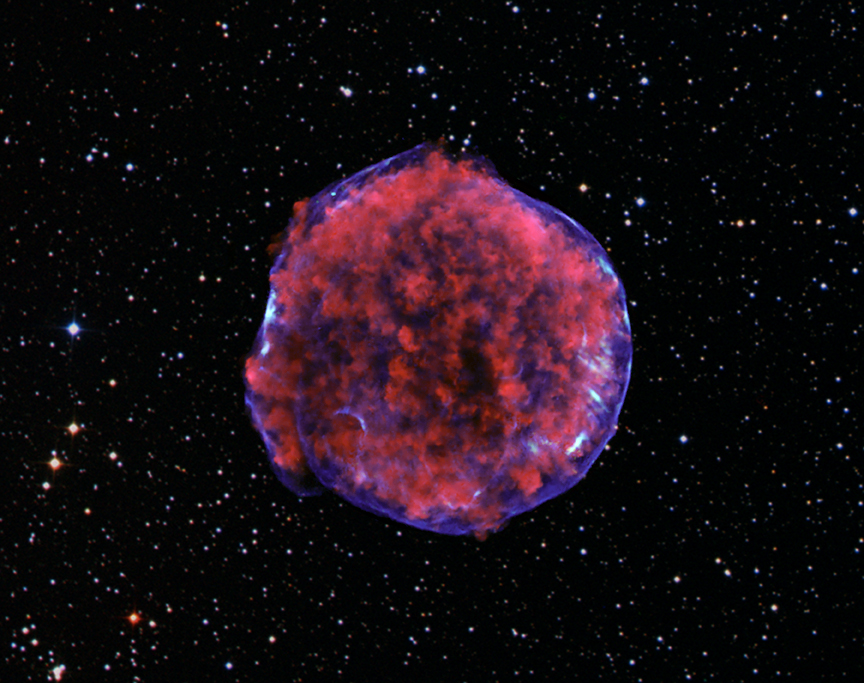Two very different models might explain the possible origin of Type Ia supernovae and different studies support each model. Some new evidence says both models are correct because some supernovae are produced one way and some the other.
Type Ia supernovae are known to originate from carbon-oxygen white dwarfs, the dense cores of dead stars. White dwarfs are also called degenerate stars because they're supported by quantum degeneracy pressure and supernovae have been theorized to arise in a single-degenerate scenario or a double-degenerate scenario. In the single-degenerate model for a supernova, a white dwarf gathers material from a companion star until it reaches a tipping point where a runaway nuclear reaction begins and the star explodes. In the double-degenerate model, two white dwarfs merge and explode. Single-degenerate systems should have gas from the companion star around the supernova, while the double-degenerate systems will lack that gas.

Tycho supernova remnant, the result of a Type Ia supernova explosion. The explosion was observed by Danish astronomer Tycho Brahe in 1572. More than 400 years later, the ejecta from that explosion has expanded to fill a bubble 55 light-years across. In this image, low-energy X-rays (red) show expanding debris from the supernova explosion and high energy X-rays (blue) show the blast wave - a shell of extremely energetic electrons. Credit: X-ray: NASA/CXC/Rutgers/K.Eriksen et al.; Optical: DSS
"Just like mineral water can be with or without gas, so can supernovae," said Robert Kirshner, Clowes Professor of Astronomy at Harvard University and a co-author of the new work.
They studied 23 Type Ia supernovae to look for signatures of gas around the supernovae, which should be present only in single-degenerate systems. They found that the more powerful explosions tended to come from "gassy" systems, or systems with outflows of gas. However, only a fraction of supernovae show evidence for outflows. The remainder seem to come from double-degenerate systems.
"There are definitely two kinds of environments - with and without outflows of gas. Both are found around Type Ia supernovae," Ryan Foley of the Harvard-Smithsonian Center for Astrophysics. This finding has important implications for measurements of dark energy and the expanding universe. If two different mechanisms are at work in Type Ia supernovae, then the two types must be considered separately when calculating cosmic distances and expansion rates. "It's like measuring the universe with a mix of yardsticks and meter sticks - you'll get about the same answer, but not quite. To get an accurate answer, you need to separate the yardsticks from the meter sticks."
This study raises an obvious question - if two different mechanisms create Type Ia supernovae, why are they homogeneous enough to serve as standard candles? And how can they be used to support claims of 'dark energy'?
"How can supernovae coming from different systems look so similar? I don't have the answer for that," said Foley.
Preprint: Ryan J. Foley, Joshua D. Simon, Christopher R. Burns, Avishay Gal-Yam, Mario Hamuy, Robert P. Kirshner, Nidia I. Morrell, Mark M. Phillips, Gregory A. Shields, Assaf Sternberg, 'Linking Type Ia Supernova Progenitors and their Resulting Explosions', arXiv:1203.2916v2 - it will appear in an issue of Astrophysical Journal.






Comments